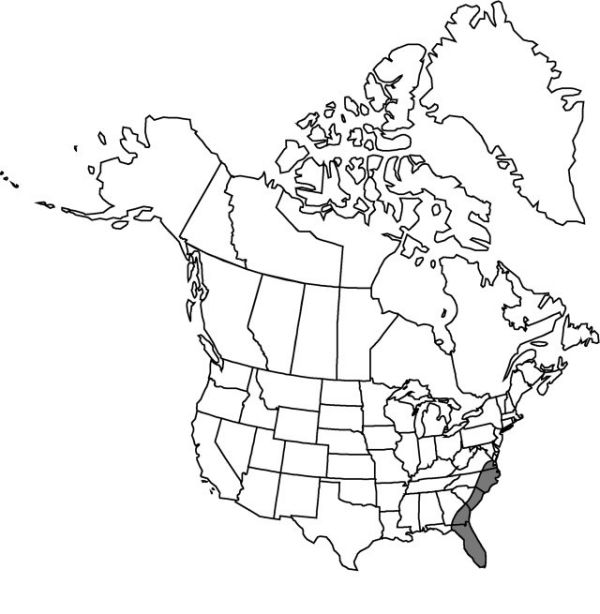Difference between revisions of "Malaxis spicata"
Prodr., 119. 1788.
FNA>Volume Importer |
FNA>Volume Importer |
(No difference)
| |
Revision as of 21:40, 16 December 2019
Plants (7–)10–29(–45) cm. Pseudobulbs 5–20 mm diam. Leaves 2–3, within proximal 1/3 of stem; blade ovate, suborbiculate, or elliptic, 2.2–9(–10) × 1.4–5(–5.5) cm. Inflorescences racemes, 1.6–13(–24) cm; floral bracts triangular, 1–3 mm; pedicels 5–10 mm. Flowers 6–150, not resupinate, green with lip also green or pale yellow, brown, orange, or vermillion; dorsal sepal reflexed, ovate, 3–3.5 × 1.5–2 mm, apex acuminate; lateral sepals reflexed, elliptic or lanceolate, 2.5–3 × 1–1.5 mm, apex acuminate; petals strongly reflexed, linear, crossing behind flower, 1.5–2.5 × 0.2–0.3 mm, apex rounded; lip ovate, 2.5–2.9(–4) × 2–3.3 mm, base prominently cordate-auriculate, nearly surrounding column, apex unlobed, acute; column 0.6–1 × 0.6–1 mm; pollinia yellow. Capsules erect, ovoid, 8 × 4 mm.
Phenology: Flowering winter–early fall.
Habitat: Hammocks and swamps, sometimes semiepiphytic on tree bases
Elevation: 0–100 m
Distribution

Fla., Ga., N.C., S.C., Va., n West Indies.
Discussion
To some extent the lip color is dependent upon flower age. Plants bloom in Florida from August to February; in Virginia, in June, July, and August; and in Pennsylvania in September. The extent to which the different flowering times are associated with groups that differ in other respects has yet to be determined, and the nature of variation in this species deserves more study.
Selected References
None.